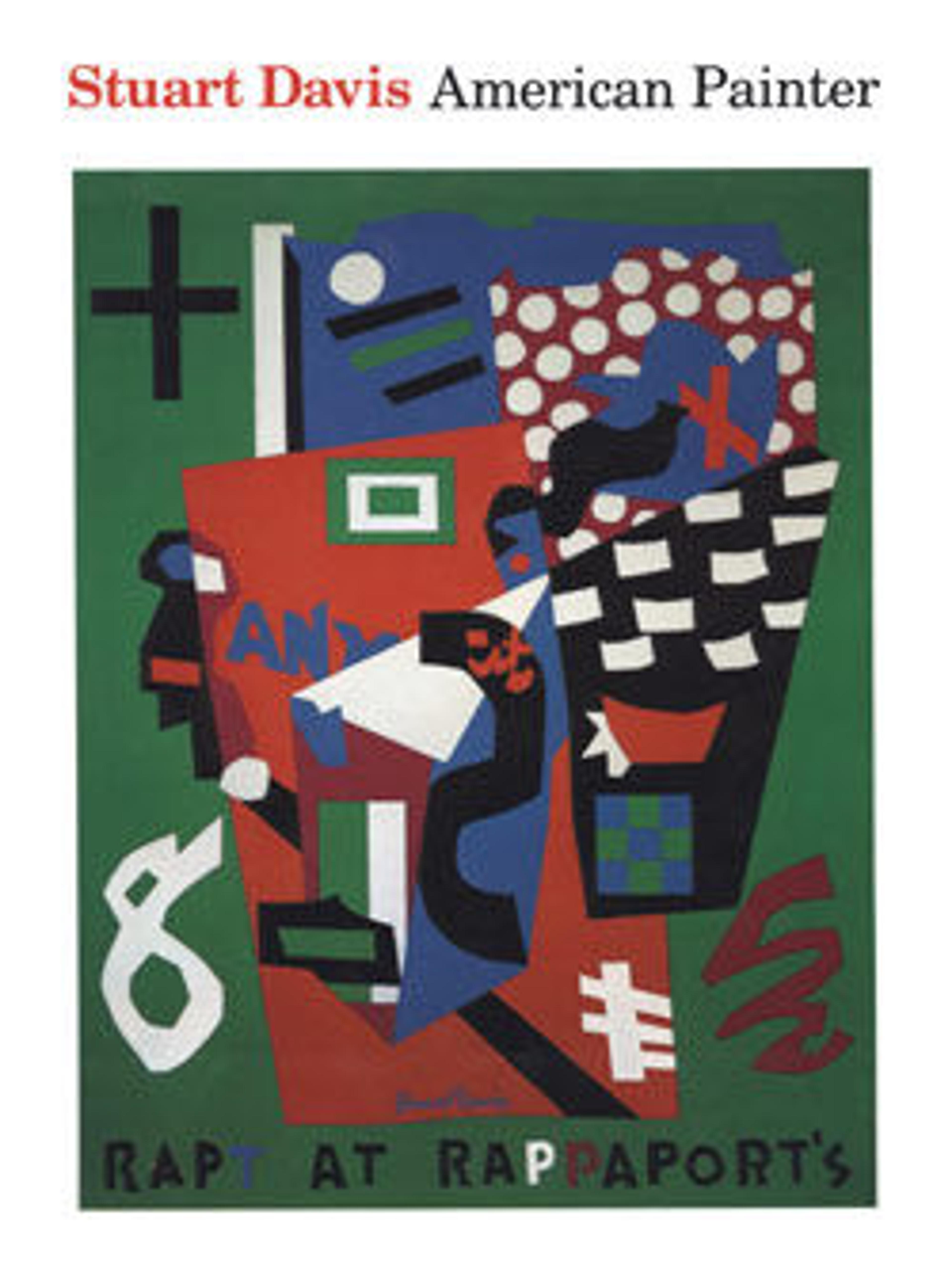Stuart Davis: American Painter
Stuart Davis (1892–1964) is one of the most important American artists of the twentieth century, whose artistic sensibility was formed early on by his teacher, Robert Henri, leader of "The Eight," and by the revolutionary Armory Show of 1913. That landmark exhibition exposed Davis to the new European modernism, which challenged traditional and academic concepts of art. From 1909 to 1923, the works of van Gogh, Matisse, Mondrian, Léger, and the Cubists were the main sources of inspiration for Davis's artistic experimentation, and he blended their influences with his own unique subject matter, which was rooted in the diversity of American culture. Out of the energy, vibrancy, change, and conflict of contemporary life, Davis forged a personal iconography inspired by the upheaval of the city, the tranquility of the seaside, industry and the automobile, cafe society, sports, consumer packaging, tobacco, appliances, and jazz music and its lingo—and by his year-long stay in Paris in 1928. His political activism led Davis to serve as an illustrator for "The Masses" and as an editor of "Art Front," as a member of the Artists' Union and the American Artists Congress, and as a muralist for the Federal Art Project of the WPA.
Yet, what distinguishes Stuart Davis's art is an "amazing continuity"—his unwavering propensity for continually reworking themes and motifs throughout his fifty-five-year-long career. It serves as the underlying theme of this volume, published to coincide with the first retrospective exhibition of the artist's work in over twenty-five years, held at The Metropolitan Museum of Art and the San Francisco Museum of Modern Art. Featured are aspects of Davis's oeuvre that have received scant scholarly attention to date, such as the early landscapes of 1909–20, the Paris paintings of the 1920s, and works of the 1940s through the 1960s—all examined within the context of such concurrent art movements as Abstract Expressionism, Pop Art, and Color Field painting. The ciphering and encoding that were integral to Davis's compositions continue to challenge scholars, but the cooperation of the artist's estate and considerable up-to-date information and recent discoveries have helped to shed new light on the imagery in the paintings, watercolors, gouaches, drawings, and graphic works included here, many of which are reproduced in brilliant color.
The seven essayists, all Stuart Davis scholars, trace the evolution of the artist's development: Diane Kelder discusses Davis's relationship to modernism; Robert Hunter, the early works of 1909–20; Karen Wilkin and Lowery Stokes Sims, Davis's art of the 1920s and 1930s, respectively; John R. Lane, Davis in the 1940s; William C. Agee, the thematic recapitulations in the work of the 1960s; and Lewis Kachur, the prominence of the word and image in Davis's compositions. Together with the ninety commentaries on 175 of the artist's works, the essays celebrate the achievements of this protean figure in American painting and the full import of Stuart Davis in the context of the history of twentieth-century art.
Met Art in Publication
Citation
Sims, Lowery Stokes, and Stuart Davis. 1991. Stuart Davis: American Painter. New York: Metropolitan Museum of Art : Distributed by H.N. Abrams.
